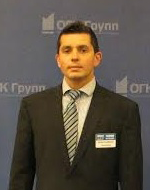 Senior geophysicist, Aarhus geophysics
Senior geophysicist, Aarhus geophysicsVladislav Kaminski is a graduate of Lomonosov Moscow State University. After graduation in 2000 he moved to Canada, where he worked as a geophysicist at Fugro Airborne Surveys (currently CGG). In 2004 Vlad entered a Ph.D. program in geoscience at the University of Pittsburgh (USA), where he was at the same time employed at the US Department of Energy, National Energy Technology Laboratory (NETL DOE) as a research associate. Upon his graduation in 2008 with a Ph.D. degree, Vlad moved to Toronto to join Geotech, Ltd as a senior geophysicist. In late 2010 Vlad changed his affiliation to a Post-Doctoral Fellowship at the University of British Columbia (Vancouver), where he worked as a research associate at the Geophysical Inversion Facility (UBC-GIF) under supervision of Douglas Oldenburg. In 2014 Vlad has joined Aarhus Geophysics ApS, as a senior geophysicist, the position, which he holds up to date. Vlad has numerous scientific publications on geophysical inversion, especially in application to gold and kimberlite exploration.
Latest developments in inversion and interpretation of airborne electromagnetic data. Extraction of Cole-Cole parameters from TDEM for mineral exploration.
Aarhus Geophysics is happy to present recent developments in multiparametric geophysical inversion and TDEM data interpretation for gold exploration. The approach is based on simultaneous extraction of four Cole-Cole parameters from airborne TDEM data affected by AIP. It has been previously discussed and preliminary results shown in published materials, as well as presented at Minex 2015 (also available in Russian). The recent developments allowed Aarhus Geophysics to commercially implement this approach for large-scale gold exploration projects, including a VMS prospect in Oman surveyed in 2012 by VTEM and a gold prospect in Nunavut (Canada), surveyed in 2015 by SkyTEM. The inversion of VTEM data is supported by drilling information. The SkyTEM survey covered some 8700 line km and was inverted in four tiles with capability of simultaneous inversion of 40,000 stations.
